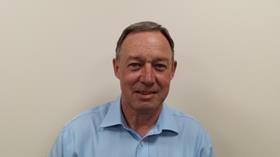
How does Chingford Fruit recycle waste materials?
Colin Ormerod: Using a local recycling management partner, Elite Recycling Solutions, the bulk of waste materials are recycled at a local plant.
With any business there is a considerable amount of packaging waste. All plastic waste from Chingford Fruit is sorted at a recycling plant in Cambridge.
Any palettes that we no longer need are resold within the industry. We send any damaged palettes to L & J Packaging, who repair and then sell on. If the palette is damaged beyond repair it is broken down into biomass that is used for renewable energy.
One of Chingford Fruit’s main waste materials is cardboard. This is transported to Germany, on empty trucks that are returning to the country so that transportation is as carbon neutral as possible.
How much have you invested in LED lighting?
CO: Chingford Fruit is investing over £175,000 to convert all lighting across its site to LED lighting, to cut energy use by 80 per cent.
LED lighting emits little heat so we will use less energy to keep the refrigeration unit at its optimum temperature. This is a major step forward and will undoubtedly be more cost-effective for us.
Ahead of installation, it is hard to know exactly how much LED lighting will cut our need to cool the refrigeration unit, but once installed we will conduct thermal imaging to assess it’s impact.
Where do you source your LED lights?
CO: Chingford Fruit has been working with the same local company, 8point3, to manufacture the LED lighting strips, which have been developed to incorporate LED lighting and UV LED lighting.
The benefit of commissioning two types of light within one strip is that it produces a better quality of fruit due to the UV light highlighting any translucent waste, known as citrus “blind waste”, when the fruit is passing the sorting line.
We believe the incorporation of UV LEDs and standard LED lighting is a unique development within the fresh produce industry. We have had a great working relationship with the manufacturers, who are based less than five miles from our Dartford offices.
The LED luminaires are predominantly a mixture of high bay fittings for the operational areas, including the cold stores, and recessed panel luminaires with integrated Lutron controls for the office areas.
What other green initiatives are you working on?
CO: Generating electricity from fruit waste, or anaerobic digestion, is nothing new, but it is an integral part of Chingford Fruit’s business. We supply fruit waste to Guy & Wright, a local farm, who grow tomato plants for one of the UK’s leading retailers.
The initiative generates enough thermal and electrical energy for the three-acre farm to be completely self sufficient and sustainable.
The fruit waste is fed into a digestion unit, and then bacteria break down the waste and emit methane. The methane is burned in a CHP turbine and generates electricity. Often the farm produces more electricity than it needs to run. In this case, surplus electricity is sold back to the National Grid through electricity supplier Green Energy, who in turn sell the electricity back to a UK national retailer.



